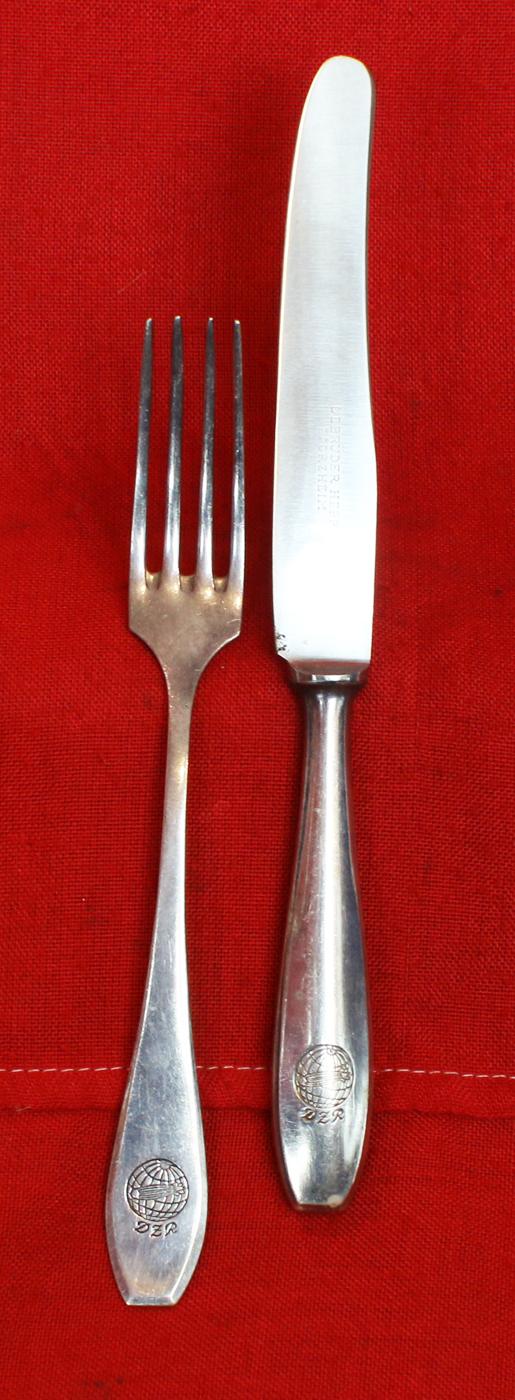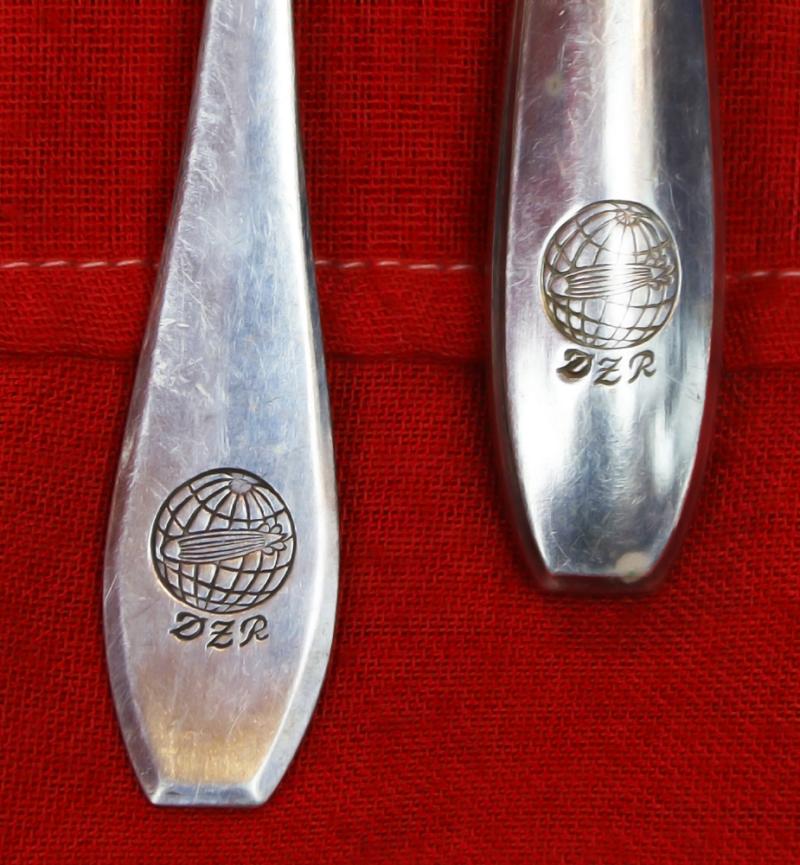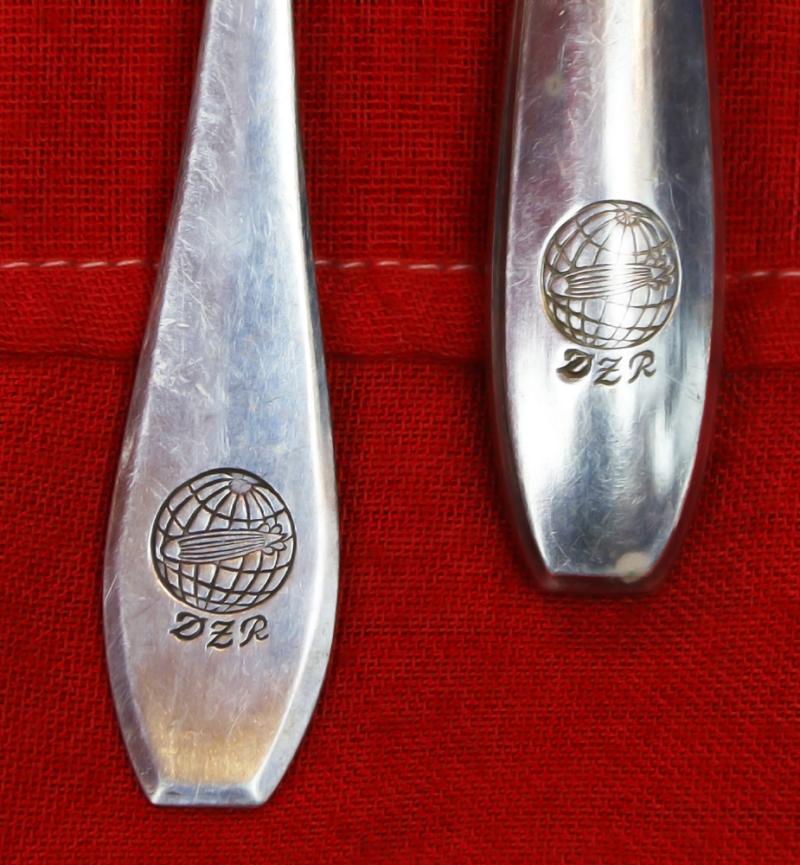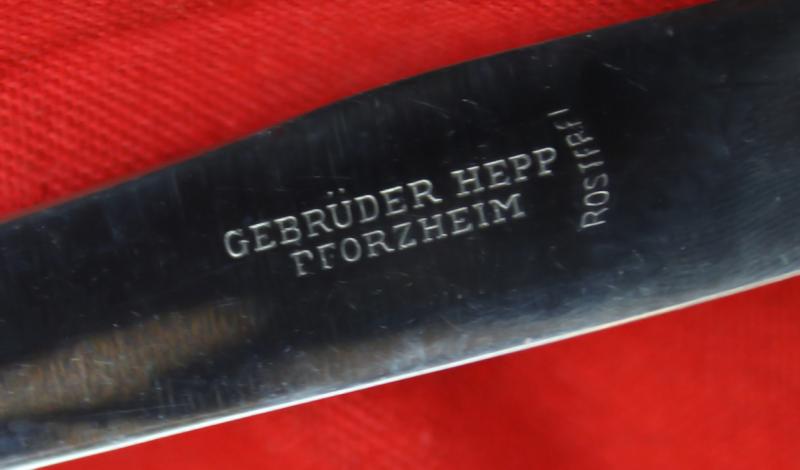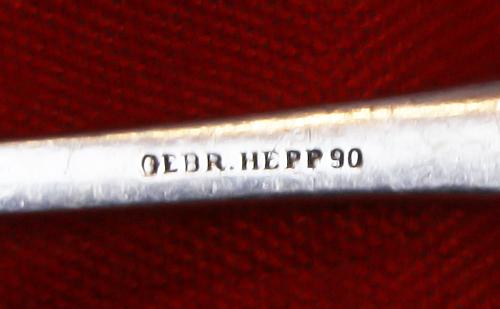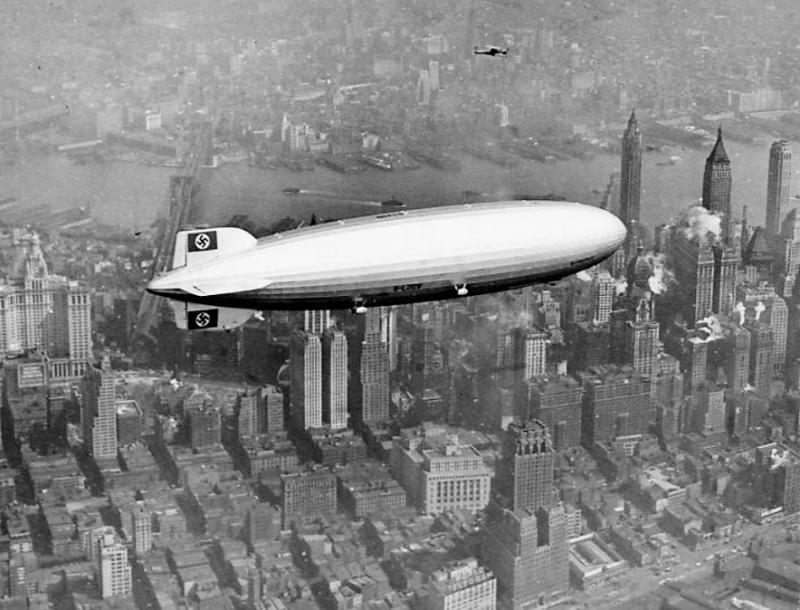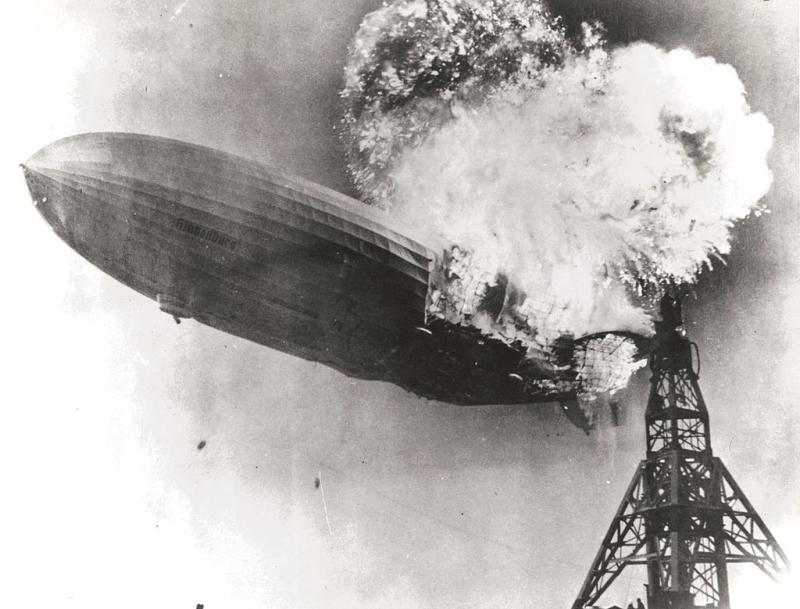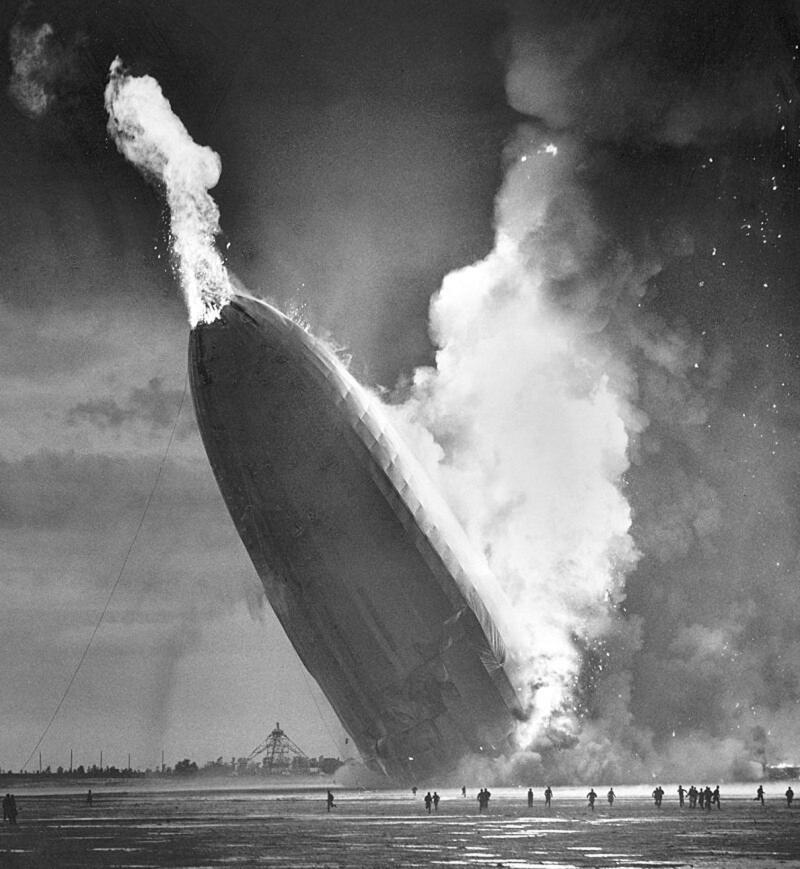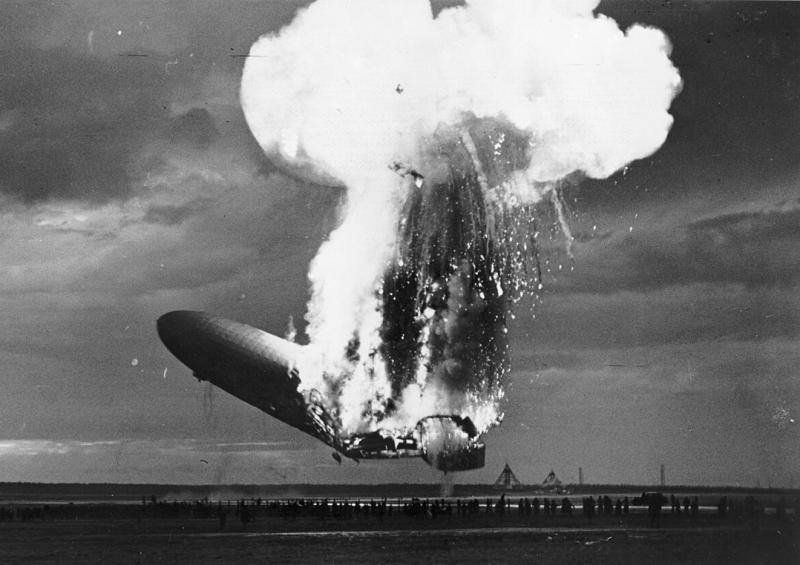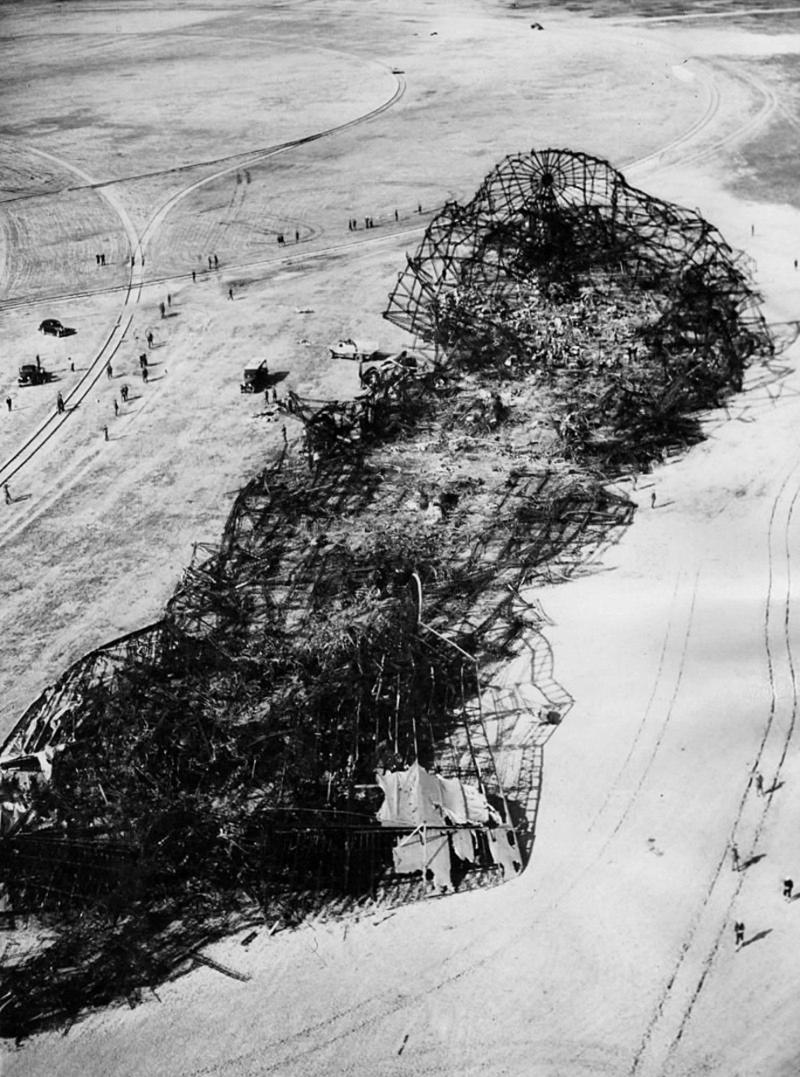A1930's Third Reich, Deutsche Zeppelin-Reederei Air Ship Silver Knife & Fork, From The Hindenberg Dining Room, Allegedly Recovered After The Crash By a Lakehurst Based Military Officer. Made by Gebr.Hepp {the Hepp Brothers}
The Deutsche Zeppelin-Reederei (the German Zeppelin Transport Company, or DZR) was established on March 22, 1935, to operate German passenger airships.
On May 6, 1937. The world reknowned Nazi airship Hindenberg, upon landing at Lakehurst USA, exploded into a ball of fire. One of the very first international disasters that was captured live on film.
If one looks at the live disaster explosion photos in the gallery it seems remarkable that most of the passengers and crew survived. There were about 97 people onboard just 36 of them perished. During an attempt to land at Lakehurst Naval Air Station, the Hindenburg airship caught fire and disintegrated into a raging ball of fire near-instantaneously, in a display of rapid combustion unlike any other. Despite its enduring legacy as a horrific disaster, less than half of the people on board the Hindenburg actually died. 62 passengers and crew escaped with their lives.
A simple yet powerful memorial marks the site of the crash. A cement outline in the shape of the Hindenburg stretches across the airfield in the spot where the airship crash-landed in flames.
The site was declared a Registered National Historic Landmark in 1961.
Prior to the establishment of the DZR, passenger zeppelins were built by the Luftshiffbau Zeppelin (the Zeppelin Airship Construction Company, known as the “LZ”) and operated by DELAG (Deutsche Luftschiffahrts-Aktiengesellschaft, or German Airship Transportation Corporation Ltd), which was established in 1909 as an offshoot of the LZ and dominated by Hugo Eckener. With the establishment of the DZR, airship activities were divided between the LZ, which would continue to build the airships, and the DZR, which would operate them. Consistent with Nazi ideology, the airship was expected to be more than just a private commercial venture; it was to be a public symbol of the new German nation. In a speech marking the founding of the DZR, Göring commented: “I hope that the new ship will also fulfill its duty in furthering the cause of Germany… The airship does not have the exclusive purpose of flying across the Atlantic, but also has a responsibility to act as the nation’s representative.”
The establishment of the DZR may have also been partly inspired by the bureaucratic rivalry between Air Minister Göring and Propaganda Minister Joseph Goebbels, and Goering’s commitment of 9 million marks to the zeppelin project, on condition of the creation of the DZR, came shortly after Goebbels offered the Zeppelin Company 2 million marks toward the completion of LZ-129 in the summer of 1934.
In March 1935, the South Atlantic flights became the responsibility of the Nazi controlled Deutsche Zeppelin-Reederei, after this company had been set up jointly by Luftschiffbau Zeppelin, the German Air Ministry and Deutsche Lufthansa. The DZR was created at the instigation of Air Minister Hermann Goring as a way to increase Nazi control over zeppelin operations, and can be see as part of the larger policy of Gleichschaltung, or coordination, which affected all aspects of German life in the years following Hitler’s assumption of power.
Consistent with Nazi ideology, the airship was expected to be more than just a private commercial venture; it was to be a public symbol of the new German nation.
In a speech marking the founding of the DZR, Goring commented:
“I hope that the new ship will also fulfil its duty in furthering the cause of Germany
The airship does not have the exclusive purpose of flying across the Atlantic, but also has a responsibility to act as the nation’s representative.”
The even larger airship, the LZ 129 'Hindenburg' joined the 'Graf Zeppelin' in 1936, and, in addition to South Atlantic flights with its partner, inaugurated a service over the North Atlantic, between Frankfurt and Lakehurst in New Jersey, in the summer. Also in 1936 the South American route was extended to Rio de Janeiro. Deutsche Zeppelin-Reederei ceased operations as the commercial use of airships came to an abrupt end on 6 May 1937, when the 'Hindenburg' exploded at Lakehurst.
We also have a silver tray from the same flights, and was the product of the same silver company that made the Third Reich military cutlery and other silver objects for the Third Reich hierarchy - Gbr. Hepp. {Hepp Brothers}
His company, alongside his rival, Wellner, was a maker of much of the Fuhrer's formal dinnerware, and the Reich chancellery dinnerware pieces. Many items by were used in several of Hitler's residences, the Hotel Der Deutscher Hof personally used by Hitler, and numerous state offices. The Zeppelin Corps became one of the shortest-lived German service branches of World War II. After the German invasion of Poland in 1939, the Luftwaffe ordered the last two Zeppelin airships moved to a large Zeppelin hangar in Frankfurt. In March of 1940, Goring ordered their destruction and the aluminium fed into the Nazi war industry. In May, a fire broke out in the Zeppelin facility which destroyed most of the remaining parts. The rest of the parts and materials were soon scrapped with almost no trace of the German "Giants of the Air" remaining by the end of the year.
Although the dining-room cutlery was the same for both the Hindenberg and the Graf Zeppelin, by family repute this cutlery pair came from the Hindenberg, recovered after the fatal crash. They were blackened with soot but were polished up beautifully, and fully intact. The family originally had a military officer stationed at the base at Lakehurst, New Jersey, at the time, and he witnessed the explosion and helped directing the clear-up over the following few days. the last photo in the gallery is the crash site with the clean-up crew to the top left of the photo, the officer that found this knife and fork is apparently one of those men.
Another fork from the Hindenburg was featured on an episode of the show Antiques Roadshow {US} in the "Vintage Tampa" episode, which aired as Season 18, Episode 20.
Mon, Jun 23, 2014
Code: 25947
2995.00 GBP

